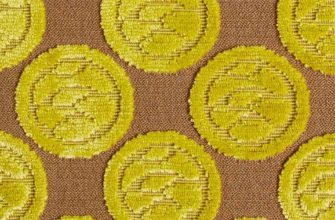The holofiber pillow has long been a leader among bedding. Some are not yet familiar with the benefits of synthetic materials. Below we consider what synthetic fillers are, how much holofiber is needed for a pillow, what are the advantages and disadvantages of this material.
- What are synthetic pillow fillings?
- How to make a holofiber pillow yourself
- How to choose holofiber
- How much holofiber do you need for a pillow?
- Hollowfiber and its care features
- How to wash holofiber correctly
- How often to wash?
- How to whip it correctly?
- Disadvantages of the product
- Product advantages
- Reviews
What are synthetic pillow fillings?
Synthetic fibers, which are obtained from polyester, have a hollow structure. They are presented in two types - small rolled rolls and canvas, used for insulation of jackets and down winter coats.
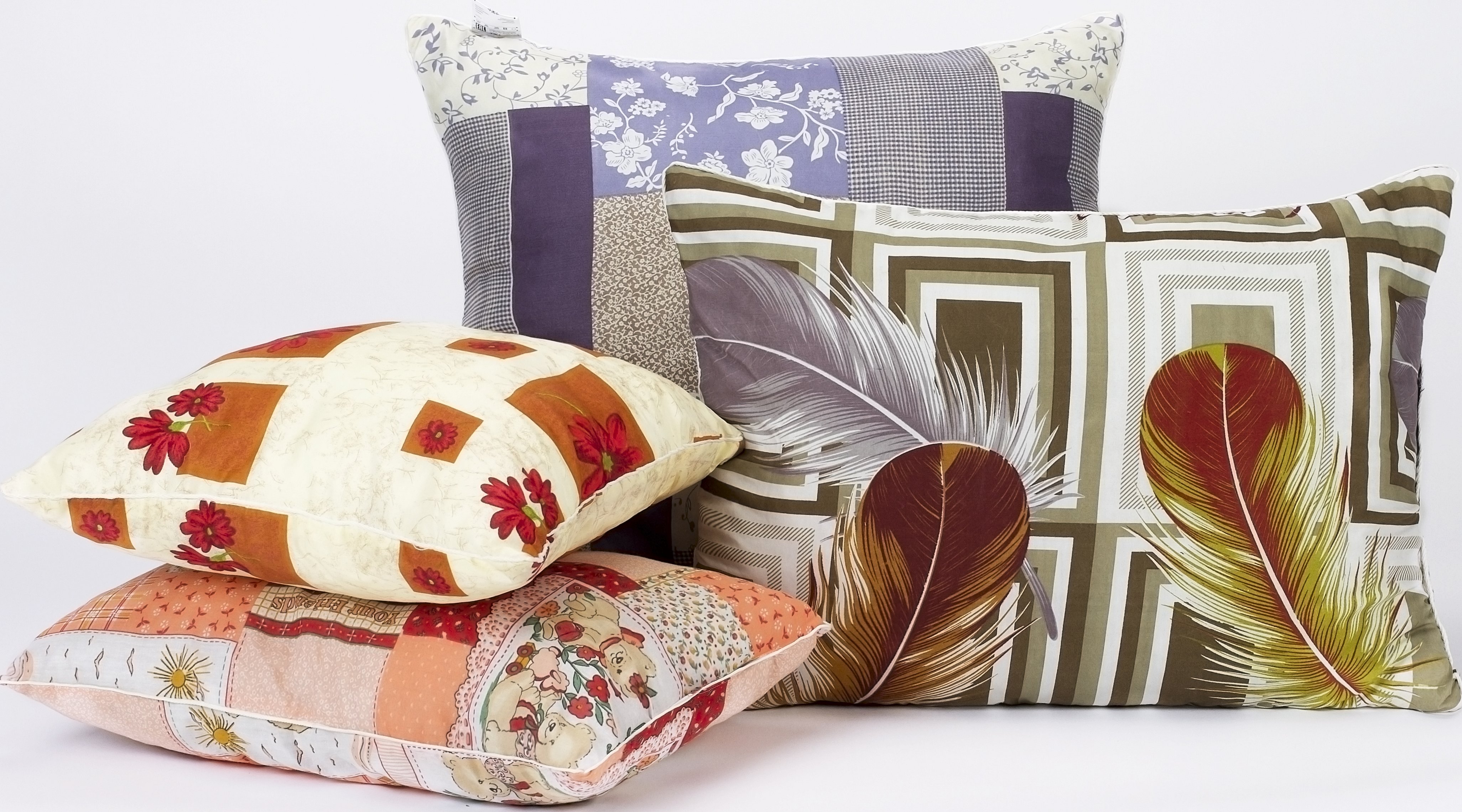
This material is not capricious and does not require special care, it is easy to wash and dries quickly. Its quality and service life are not affected by temperature, weather, humidity, etc. In jackets and winter down jackets, the material does not get wet in rainy weather. Blankets and pillows made of holofiber absorb moisture without problems and dry quickly. The material does not create a greenhouse effect, which is very convenient for people who sweat a lot.
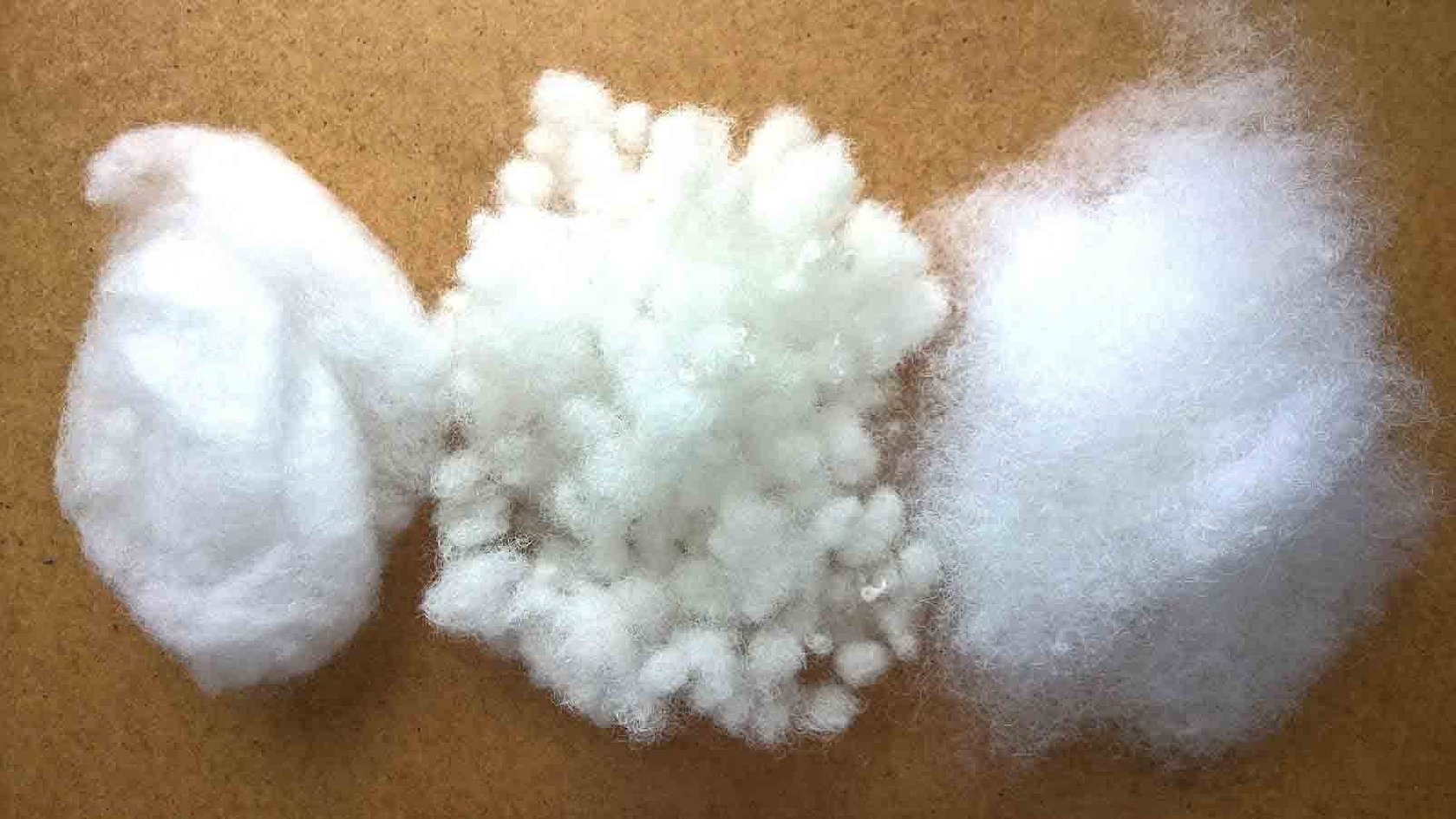
How to make a holofiber pillow yourself
Synthetic pillows come in different sizes. Some are used for sleeping and resting, others for neck support while traveling, and others for supporting the belly of pregnant women.
To sew a pillow measuring 50×70 cm you will need the following:
- cotton or calico, size 100x150 cm;
- 0.5-1 kg of holofiber, depending on the rigidity of the future product;
- scissors, meter or ruler, needles, pins, threads;
- zipper (it’s better to take a small hidden one);
- sewing machine.
Algorithm of actions:
- Calico needs to be decated (moistened or steamed to avoid deformation after the first wash).
- The fabric is cut out according to the dimensions of the future pillow and cut to form 2 rectangles (with a seam allowance of 2-4 cm).
- The blanks are folded face to face and sewn on three sides along the perimeter (you need to baste first so that the seams lie evenly).
- A zipper is sewn in on the fourth side and the garment is turned inside out.
- It is filled with holofiber and fastened with a zipper.
You can sew it up, but a zipper makes it easy to care for the pillow.
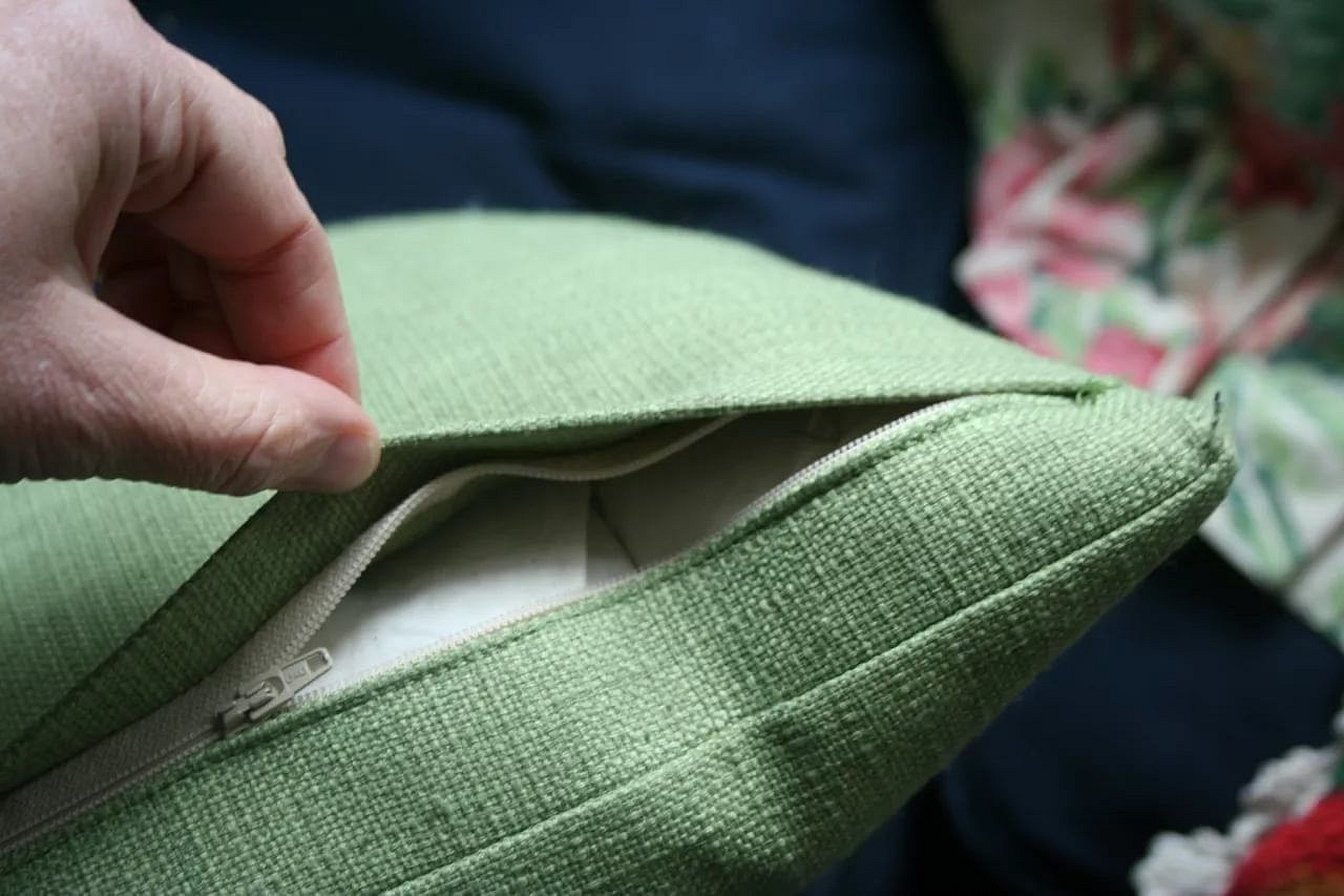
How to choose holofiber
The material must be selected according to GOST, because counterfeits can cause allergies. You can order it online or at points of sale of synthetic materials. It is important to calculate the required amount of material in advance.
If you plan to sew 1 medium-hard pillow measuring 50×70 cm (standard), then you will need 500-600 grams of holofiber. For pillows, the best material is in balls, as it is easier to distribute and does not bunch up like rolled material.
It is not worth buying the cheapest holofiber, because its quality is lower.
How much holofiber do you need for a pillow?
To understand which holofiber is best for pillows, you need to familiarize yourself with all its types:
- in balls the material is used for ski and winter clothing, filling toys, pillows and blankets;
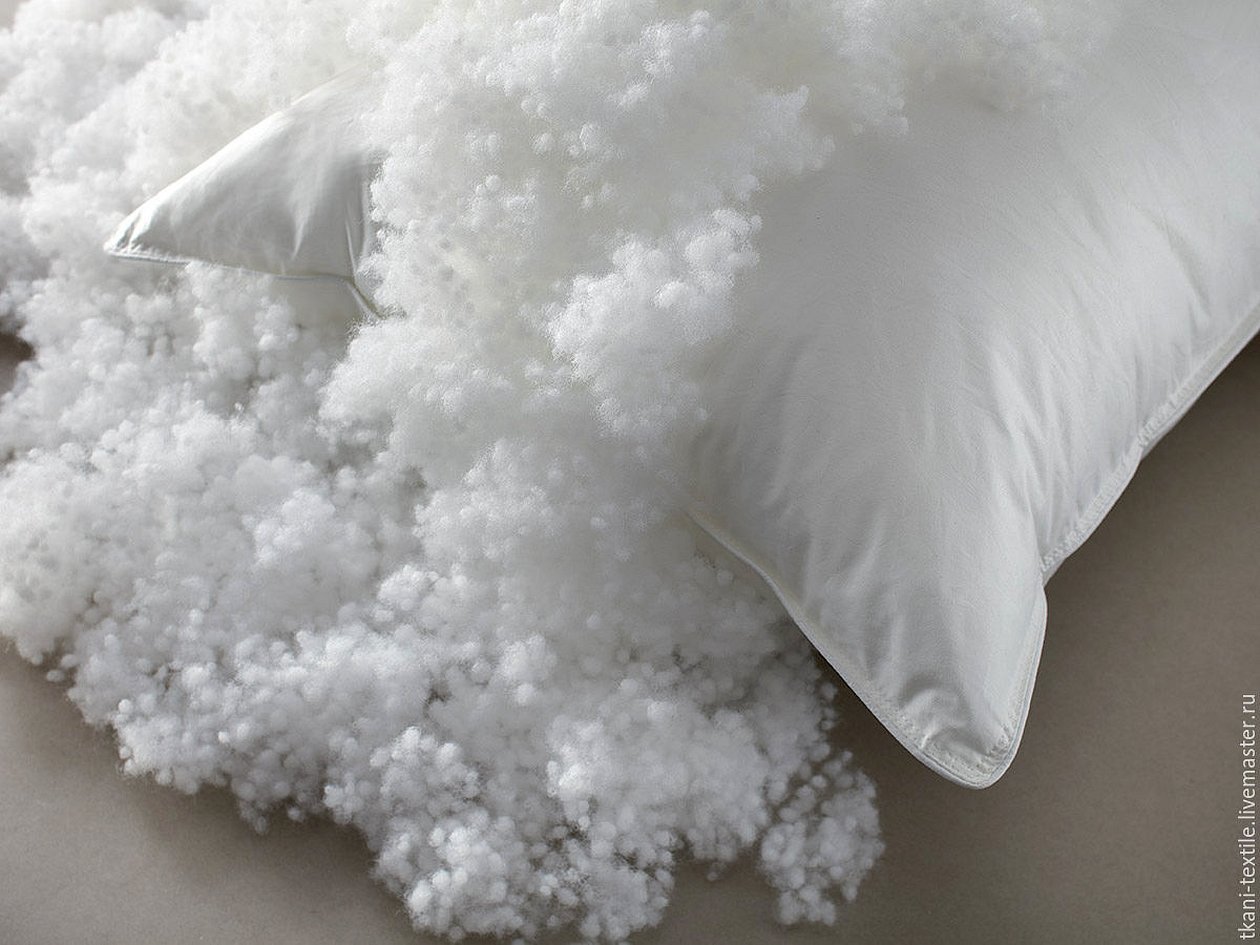
- in rolls less often, but used for jackets and coats;
- in the form of plates, the material is produced for construction work (wall insulation);
- for furniture - dense and more elastic holofiber.
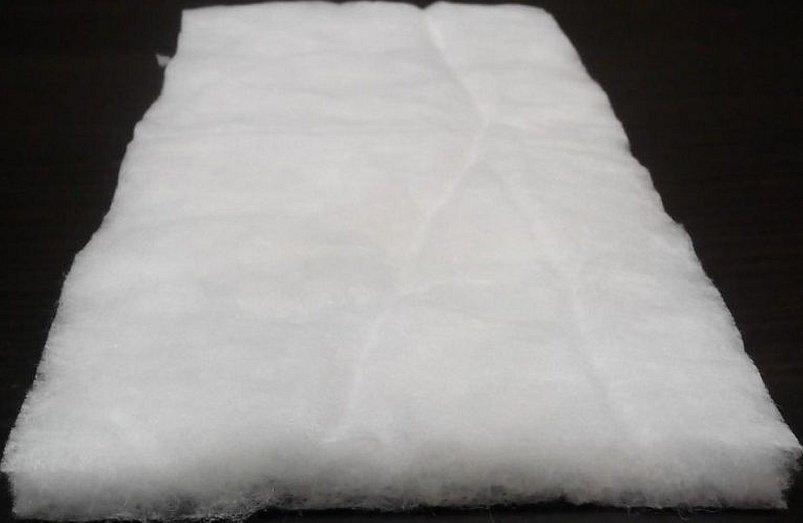
Consumers are often interested in 1 kg of holofiber - how much is the volume. Firstly, due to the cavity, holofiber can be knocked down or not.
Please note! If it is well tamped, then a kilogram takes up approximately 0.028 m³. When the pillows are made of medium hardness, then 1 piece takes 2 times less material and, accordingly, its volume is less.
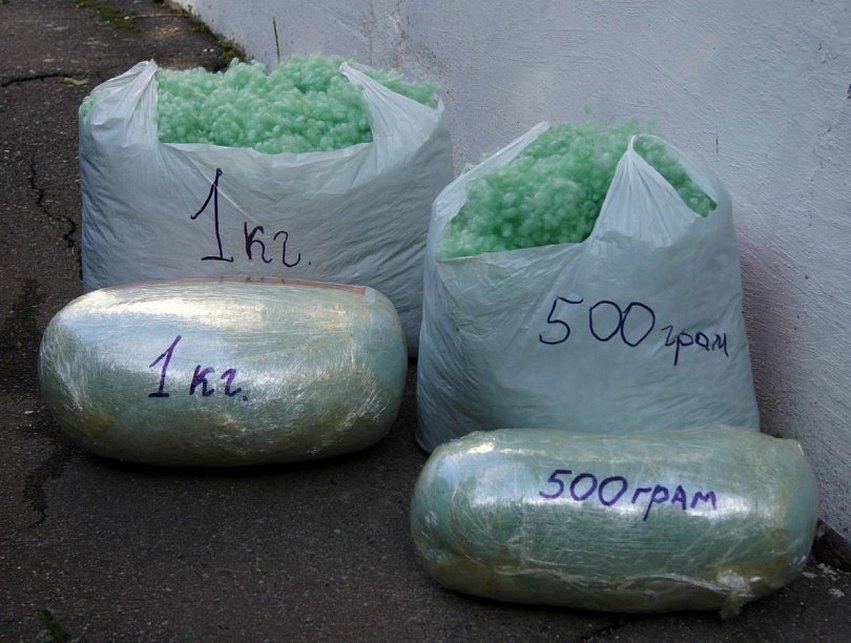
Hollowfiber and its care features
The differences from natural fillers are in the rules of care. Synthetics are easy to wash in the machine, they do not wrinkle or lose shape, they dry quickly and do not cause unpleasant odors. It is important to observe the temperature (the manufacturer indicates it on the label). When cleaning, it is important to pay attention to the lining and outer fabric. Most often, this is calico, this material is also easy to wash and does not require special cleaning.
How to wash holofiber correctly
There are 2 ways to wash:
- In the machine. It is important to follow the mode - no more than 30 °C. It is important to throw 2 tennis balls into the washing machine. This is necessary so that the synthetic filler does not get knocked down. It looks like cotton wool and can group into lumps, which will then have to be broken up manually. This will not happen with balls.
- The entire pillow is washed by hand. It is filled with water and washing gel and rinsed.
Important! Dry the product in a ventilated area or in the sun to avoid the appearance of an unpleasant odor caused by moisture.
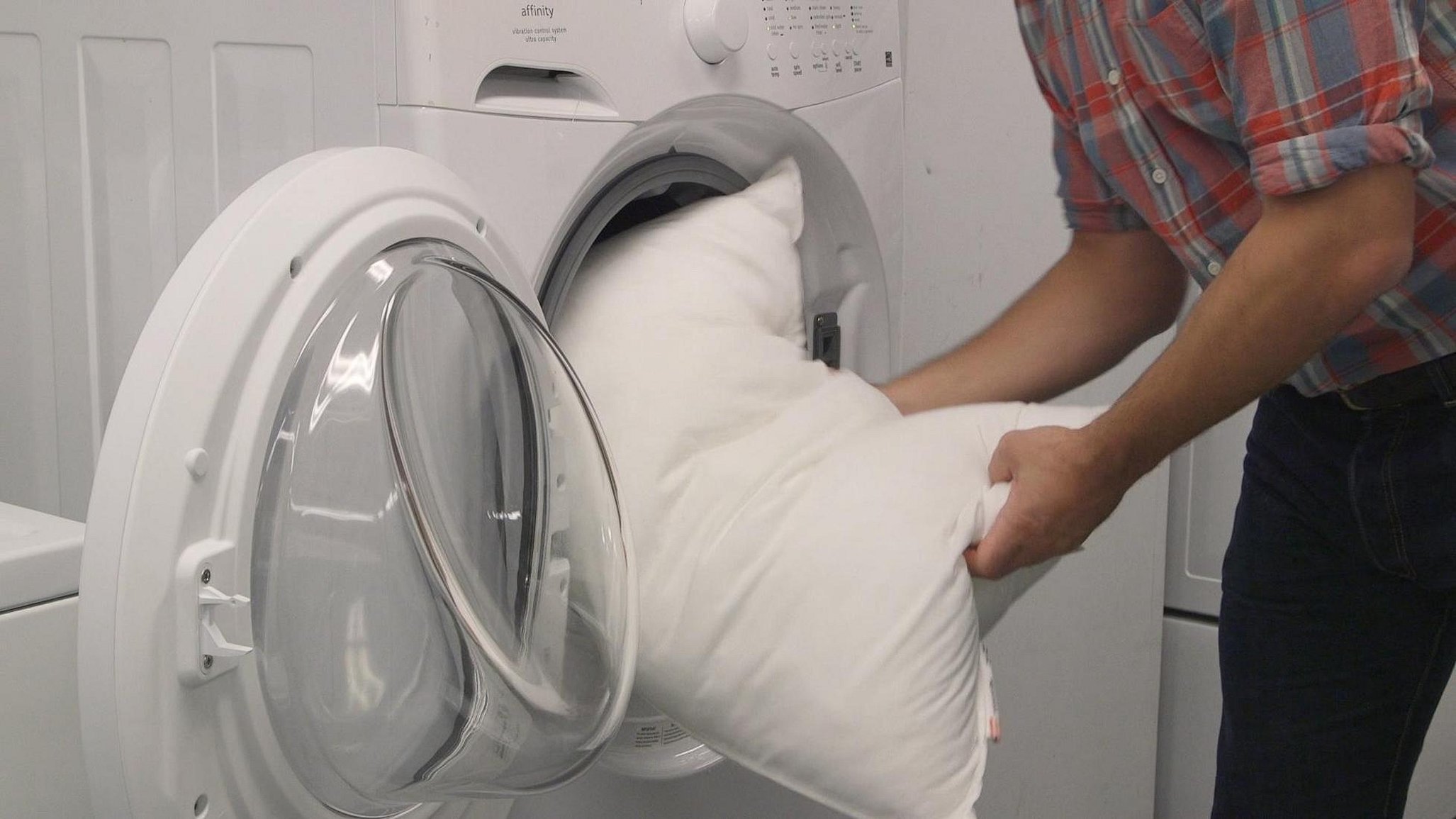
How often to wash?
Ideally, you need to refresh the product once every 2 weeks. Even if the pillow is clean on the outside, you need to consider that during sleep, sweat and natural secretions from the scalp are absorbed into it. Dust is also driven into it, which can cause allergies or asthma. It is recommended to wash children's pillows once a week and change them every six months.
How to whip it correctly?
You can dry the items in the machine or on hangers. They do not lose their shape even if you hang them on a rope, so holofiber is chosen for sewing children's winter clothes, as they are washed more often. After this, you need to fluff the product. This is done by hand, carefully beating the pillow from all sides.
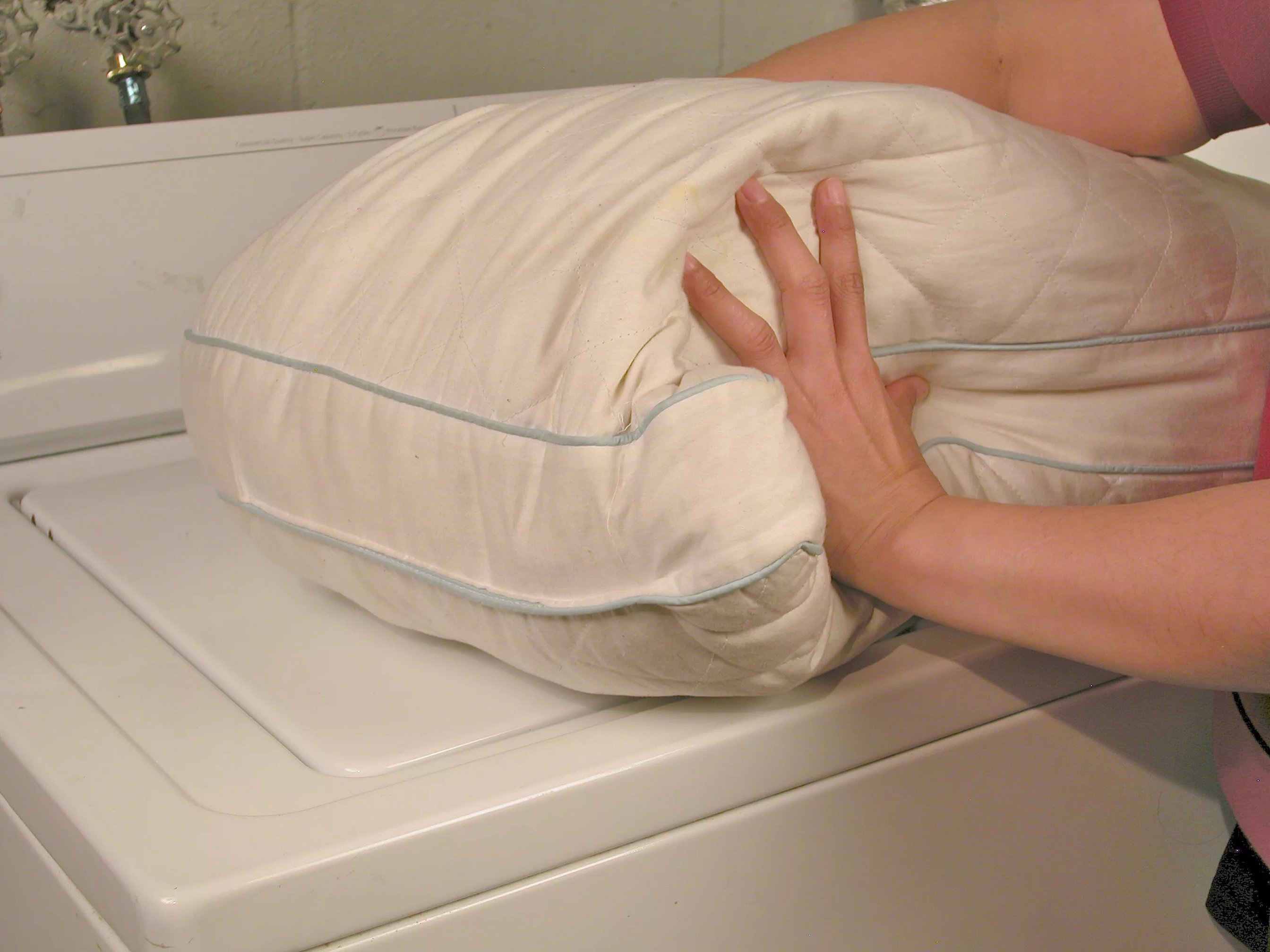
Disadvantages of the product
Like any material, it has some disadvantages:
- You need to wash it daily or by hand, because at high temperatures the fibers become deformed;
- synthetic material, not natural (although for many this is an advantage);
- does not take the shape of the body, but springs;
- short service life if not properly maintained.
Interesting! The material is very light and you can make a huge amount of it. How much is a kilogram of holofiber? From 1 kg you can sew 1 large and dense pillow or 2 medium ones - 50x70 cm.
Product advantages
The filler is popular due to its positive qualities:
- lightness and low weight, which is a particular advantage for bedding;
- heats up quickly and retains heat;
- affordable price;
- does not absorb foreign odors;
- ventilates the air and does not create a greenhouse effect;
- hypoallergenic.

Important! The technical characteristics of holofiber fully comply with the State Standard and can be used for adults and children. Products made from this material are ideal for asthmatics and allergy sufferers, who are strictly prohibited from using natural fillers.
Reviews
Marina Ivanova, 34 years old, Magnitogorsk
"Already 10 years ago, we replaced all the pillows and down blankets in the house with synthetic ones. The holofiber pillow filling does not require special care, is easily whipped up by hand, and dries quickly after washing in the machine. Our whole family is happy."
Sergey Klevtsov, 40 years old, Krasnodar
"We recently changed the pillows in the house and bought some made of holofiber. So far everything is great, no allergies and the bed linen does not absorb dust as much as natural ones."
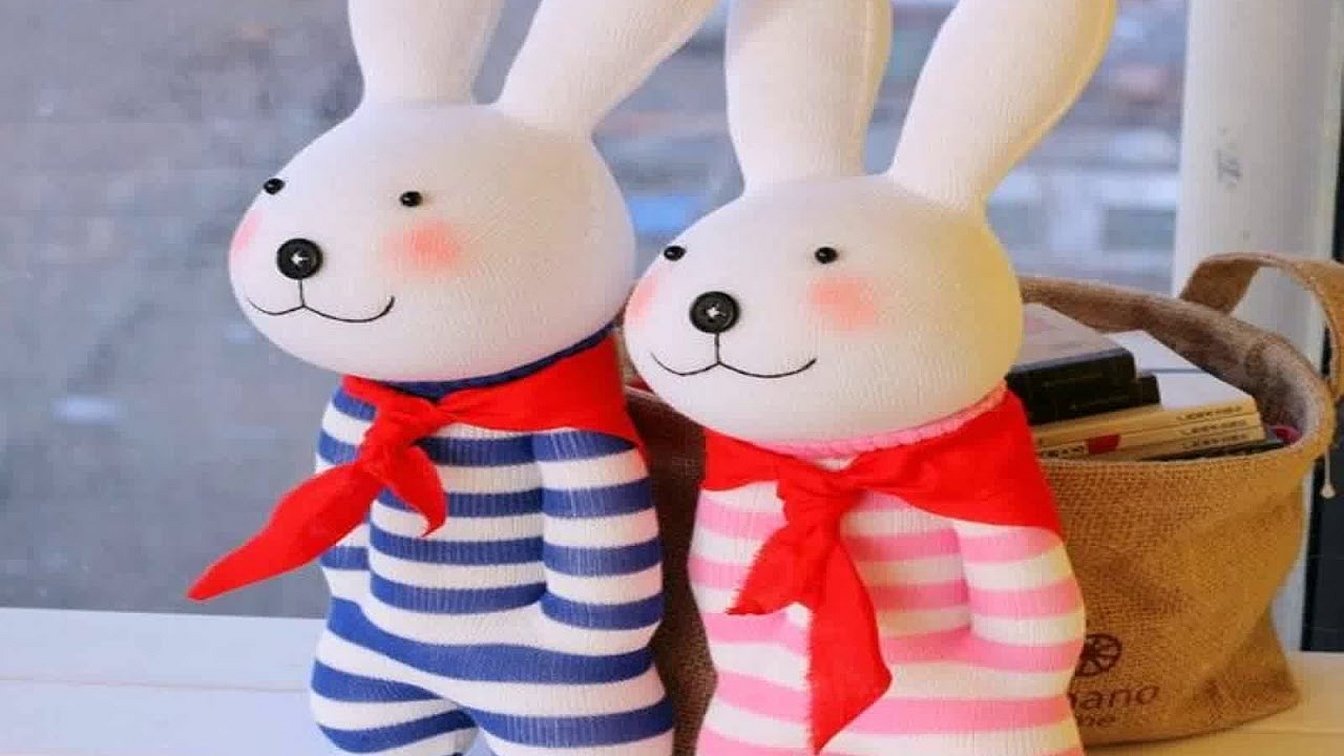
In recent years, holofiber has become an indispensable synthetic material used for insulating winter clothing and stuffing pillows and blankets. It has a number of advantages and disadvantages, which it is recommended to familiarize yourself with before using it. In order for the filler to last longer, it is necessary to provide it with proper care and operation.



